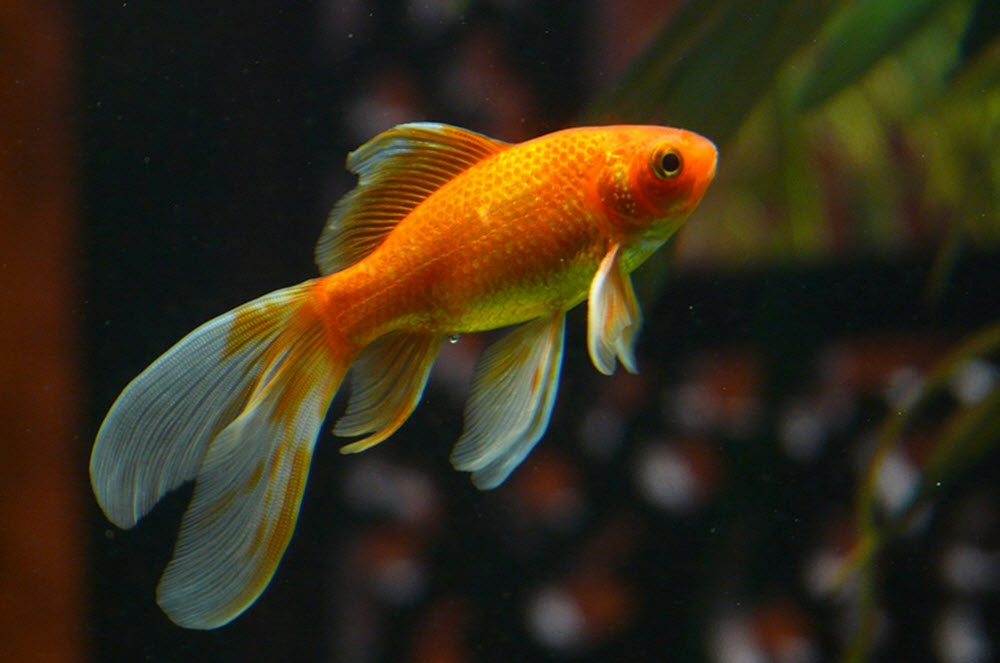Contents
Goldfish’s vibrant hues and elegant movements have captivated enthusiasts for centuries. Though often associated with aquariums, goldfish thrive in ponds, with more room to grow and exhibit natural behaviours. This article explores the enchanting world of goldfish and guides nurturing them in ponds.

Understanding the Goldfish
Origins and Characteristics
Goldfish, Carassius auratus, originate from East Asia and are members of the carp family. They were domesticated over a thousand years ago and have since evolved into various breeds with distinct colors, shapes, and fin configurations. Goldfish are renowned for their diverse palette, ranging from the classic golden-orange to more exotic hues of white, black, red, and even blue.
Breeds Suitable for Ponds
While many goldfish breeds exist, some are better suited for pond life than others. Common Goldfish, Comets, and Shubunkins are robust breeds that can adapt well to the varying conditions of outdoor ponds. Conversely, fancy breeds with elaborate fins and peculiar body shapes are more delicate and fare better in controlled aquarium environments.
Creating a Hospitable Pond Environment
Size and Depth
Goldfish require ample space to thrive. A pond intended for goldfish should ideally have a capacity of at least 500 gallons. Additionally, the depth of the pond is significant, especially in regions with cold winters. A 2 to 3 feet depth allows goldfish to seek lower, warmer water layers during winter.
Water Quality and Filtration
Maintaining high water quality is paramount. A filtration system is necessary to remove waste and keep the water clear. Moreover, regular testing of water parameters, including pH, ammonia, nitrites, and nitrates, helps monitor the pond’s health.
Vegetation and Shelter
Aquatic plants serve multiple purposes in a goldfish pond. They aid in water filtration, provide shade, and also serve as a source of nutrition for the fish. However, care should be taken to ensure that goldfish do not decimate the plants, as they are avid grazers. Additionally, providing shelter, such as rocks and logs, can offer goldfish hiding places and protection from predators.
Feeding and Care
Nutritional Requirements
Goldfish are omnivorous and have varied dietary needs. A combination of high-quality pellets and natural food such as aquatic plants, worms, and insects ensures a balanced diet. Supplementary feeding can be reduced in a pond with abundant natural food sources.
Health Monitoring and Maintenance
Observing goldfish for any signs of stress or disease is vital. Clamped fins, erratic swimming, or visible spots may indicate health issues. Regular maintenance, including cleaning of filters and partial water changes, helps in preventing diseases.
Winter Care
Preparing for the Cold
In colder climates, pond goldfish require special care during winter. Decomposing leaves and organic matter should be removed from the pond to prevent a decline in water quality. Using a pond heater or aerator ensures that a section of the pond remains unfrozen, allowing for gas exchange.
In the domain of ornamental fishkeeping, goldfish in ponds hold an esteemed place. Their serene presence and graceful movements embellish outdoor spaces and create tranquil environments. Meticulous planning and attentive care are key to fostering a thriving haven for these aquatic gems. By understanding their needs and fostering a conducive habitat, enthusiasts can savor the gratifying experience of nurturing goldfish in the naturalistic setting of a pond.